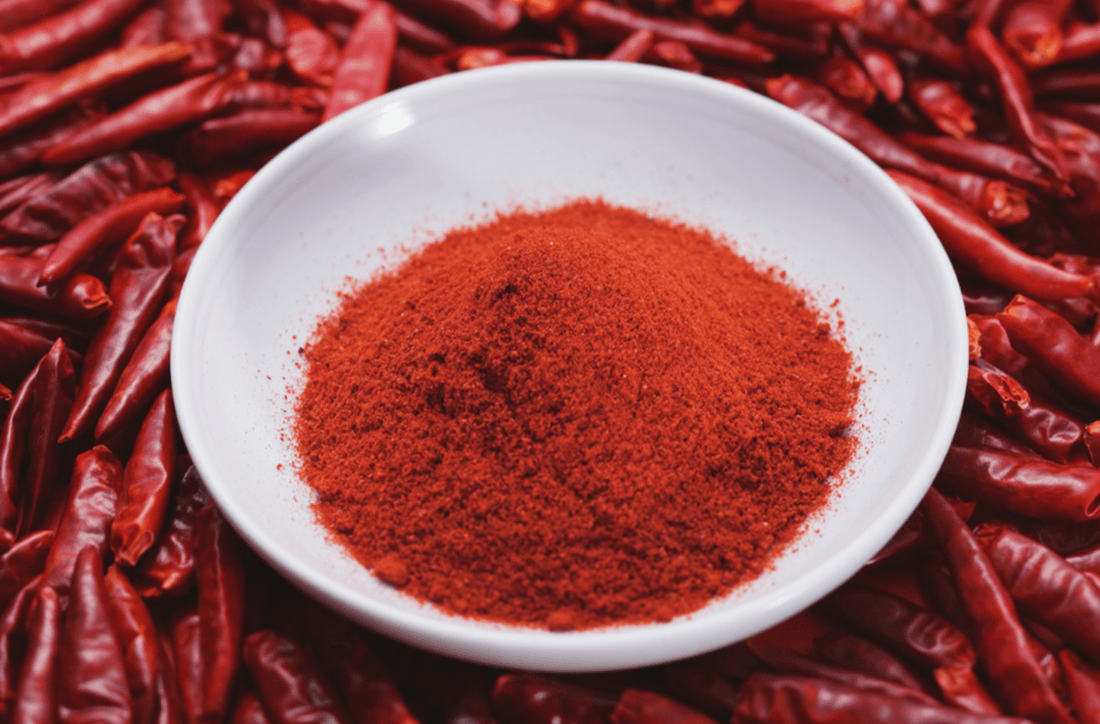We all know and love paprika! This bright coloured spice is a staple in most kitchens, but what if I told you it could be a staple in your soap bars too!
Natural paprika powder makes a beautiful yellow to orange coloured soap and it adds gentle exfoliating properties!
Keep reading to discover how to incorporate paprika into your soaps…
What is Paprika Powder?
Paprika is a dark orange to yellow coloured spice produced from a variety of peppers. Due to its strong colour, paprika powder is common in cosmetics as a natural dye.

Why Use Paprika Powder in Soap Making?
Paprika powder is the best way to make a beautiful orange, yellow or red coloured soap naturally!
Depending on how you incorporate the powder, the colour and appearance of the soap can vary. Paprika powder should be added to the lye water or at trace. In this recipe, we’ve added our paprika powder at trace and it creates a stunning orange coloured soap with red speckles!
We recommend using 6g to 12g (1 to 2 teaspoons) of paprika powder per pound of soap to create an orange coloured soap bar.
Let's have a go at our paprika soap recipe...
This soap recipe makes 9-10 bars of soap
Equipment:
To make our paprika soap recipe, you will need:
- Gloves
- Goggles
- Digital scales
- Digital thermometer
- Stick blender
- Soap mould or DIY alternative
- Silicone spatula
- Microwave safe bowl
- Plastic measuring cup, ideally 2x 1L and 1x 2L
Ingredients
- Coconut oil 280g
- Cocoa butter 120g
- Olive oil 400g
- Water 240g
- Sodium hydroxide/ Lye 115.45g
- Paprika powder 9g
- Clove bud oil 1g | 1ml
- Patchouli oil 10g | 11ml
- Orange oil 9g | 11ml
- Ginger oil 1g | 1ml
- Ylang ylang oil 4g | 4ml

1. Mix the sodium hydroxide solution
- Put on your gloves and goggles.
- Open a window, the fumes are unpleasant.
- Weigh the water.
- In a separate bowl, weigh the sodium hydroxide.
- Add the sodium hydroxide to the water not the other way around.
- Mix well until combined.
- Leave to cool, it will be hot.

2. Weigh and melt the oils
- Weigh the oil into a heatproof bowl.
- Melt over a pan of boiling water, or using short bursts in the microwave.
- Stir regularly.
- Once melted, leave to cool.
- In a separate jug, weigh and mix your essential oils.

3. Test the temperatures
- Test the temperature of the sodium hydroxide solution. It should be between 25C and 40C.
- Leave it to cool if necessary, but don't reheat it if it's too cool.
- Test the temperature of the oil mixture. It should be between 35C and 40C.
- Leave it to cool or reheat if necessary.
- Once the temperatures are correct, add the sodium hydroxide solution to the oil mixture.

4. Blend until trace
- Stir with the hand blender, and blend with short pulses.
- Watch for the soap batter starting to thicken.
- Test for trace by dripping soap batter on the surface of the mixture. If the drips sit on the surface before disappearing, your mixture has reached trace.
- Stop blending once your soap has reached trace.
- Add the essential oils and paprika powder.
- Mix and blend a little until combined.

5. Pour into moulds
- Pour your soap mould.
- Tap on the work surface to get rid of air bubbles.
- We’ve sprinkled a little bit of paprika powder on the top of our soap for extra decoration, but this is optional.
- Insulate with towels.
- Leave on a flat surface for 48 hours

6. Leave to cure
- Unmould your soap.
- Place bars with a space in between.
- Leave to cure for 4-6 weeks
Continue Reading
Now you know how to use paprika to dye your soap, why not continue reading?
- Want to try more natural colourants in soap? Take a look at our madder root soap recipe!
- Learn more about soap making with our gel phase in soap making blog!
- Try something new with a beginners candle making recipe!
How did you find this paprika soap recipe? Let us know how you got on in the comments!



